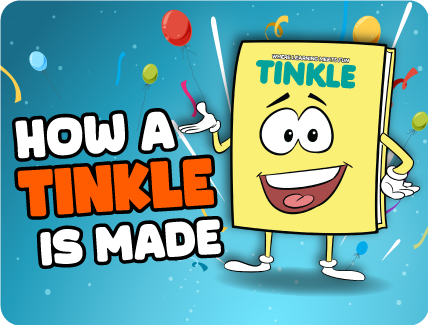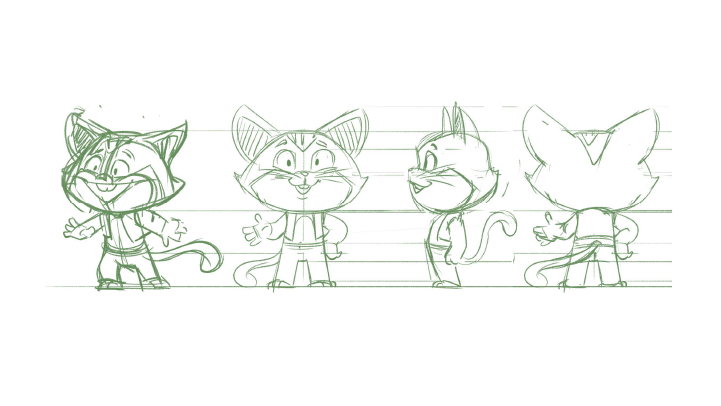

















Then again, each month feels like a birthday to me. Because I get a brand-new cover, fresh features and piping-hot stories that my readers lap up in a jiffy.
And as a treat for you, my reader, I have called all the Toons to tell you how a Tinkle issue is made. Even though I have seen it happen 800+ times (yes!), I still get excited about the process.
Oh, look! Suppandi is here.
First, the editorial team makes a list of stories and features to publish in the magazine. You must have noticed that the magazine always has a variety of stories in several genres—mystery, comedy, adventure and much more. I am always on the list, thanks to my fans.
Then the writers get to work—spinning stories and researching features. It gets pretty crazy—they go into a frenzy until a plot idea strikes. Next, they start developing characters. And many can be seen pulling out their hair and grinding their teeth to get it right. When it’s all done, they heave a sigh of relief.
But the process doesn’t end here. The writers and editors get together to hear the stories and provide feedback. Each writer then goes back to their writing board (laptop) and fine-tunes their stories.
Can you list the details that make up the script? It has dialogues and a description of each panel. What else can you spot in the script?
These scripts are then sent to the Editor-in-Chief who has a magnifying glass (to spot mistakes), an English dictionary (to check spelling) and a strong dislike for incorrect grammar. The Editor-in-Chief checks scripts like an English teacher would check exam papers. They also correct any logical flaws in the story. Once all these changes are incorporated, the final script is ready to be given to the artists.
As the artists starts reading the scripts, colourful ideas start bubbling in their heads. They waste no time in whipping out the stylus tucked behind their ears to start sketching. Because, you see, these ideas have a mind of their own. So, they tend to disappear if you don’t jot them down fast. Artists work on computers and use various software to sketch. Rough sketches look like the picture given below: 

Do you recognize this cat? This cutie is from ‘Speechless: A Cat-astrophic Afternoon’, published in Tinkle 803. These pictures are called turnaround sketches because they give a 360-degree view of the character.
Every artist has a signature style. See if you can spot the differences in Tinkle Toons illustrated by different artists. They play around with character expressions and backgrounds to make the comic pop!
The cat begins to look more like herself after the artist inks the sketch. That is, the edges are cleared up and given bold and defined lines.
The colourist chooses colours to suit the emotion and mood of the story. For example, bright colours like yellow and red are used in high-energy scenes. Green and blue, on the other hand have a calming effect. I have suggested that they paint an entire story in bright yellow, the colour of a boondi laddu. Yum!
The comic then reaches the letterer who adds dialogues, captions and sound effects in the panels using various software. They ensure that the text is easy to read.
Thank you, Raja Hooja, I will take it from here.
After the story has been lettered and coloured, it makes its way back to the writers and editors. They ask for any necessary changes in art and text before the comic is deemed ready for print.
This process is repeated for every story and feature that appears in Tinkle. Once all the content is ready, it is compiled into a final file and sent for printing.
You might have noticed that each Tinkle features an eye-catching cover. The editorial team along with the artists brainstorm together to come up with a concept for the cover in the initial stages of creating the comic.
Oh, the Tinkle team is getting ready to plan the next issue, and they are calling me. I need to bounce! But I have so much to share with you. If you want to know how the process of making Tinkle has changed over the years click here.